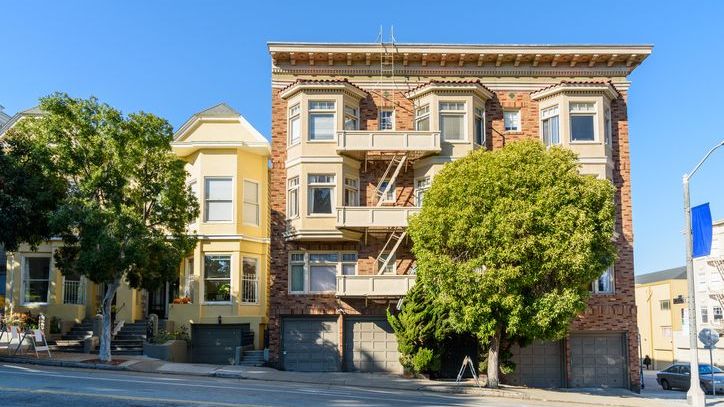
Selling an underperforming asset and buying a similarly priced, more promising investment is a logical business move – but what about the taxes on the sale? If you’re an investor in California, concerns might arise over the taxes you’ll owe for selling an investment property. Fortunately, the 1031 exchange rules from the federal government allow investors in the Golden State and across the country to defer capital gains on the sale of approved properties. Here’s how it works.
If you’re a real estate investor, a financial advisor can help optimize your portfolio to lower your tax liability.
What Is a 1031 Exchange?
Named after Section 1031 of the Internal Revenue Code, a 1031 exchange is a mechanism that enables you to defer capital gains taxes when selling a qualified investment property. The provision requires you to use the proceeds to purchase a like-kind property of similar or greater value. The primary purpose of a 1031 exchange is to encourage the continuity of investment by delaying taxes on a property sale. Investors can put off capital gains taxes in perpetuity by using a 1031 exchange every time they sell and buy another property.
What Property Types Qualify for a California 1031 Exchange?

1031 exchanges can only be used when selling business or investment properties, so your primary residence isn’t eligible (fortunately, the tax code provides a separate exemption for selling your home). You can use a 1031 exchange in California on the sale of the following property types:
- Multi-family housing
- Student housing
- Single-family homes
- Retail centers
- Healthcare
- Storage facilities
- Oil and gas
- Industrial warehouses
- Agriculture and farmland
- Healthcare
- Delaware Statutory Trust (DST)
Due to the Tax Cuts and Jobs Act of 2017, only real estate qualifies for a 1031 exchange nationwide. As a result, such exchanges in California must involve like-kind properties. The IRS describes these properties as “of the same nature or character, even if they differ in grade or quality.”
However, this guideline is flexible and quite broad. Properties are exchangeable even if they don’t function similarly. For example, you could sell a residential rental property for $500,000 and use the proceeds to purchase a $500,000 warehouse using a 1031 exchange. The property you purchase simply must be a commercial or investment property and be of the same or greater monetary value than the one you sold.
Types of 1031 Exchange Structures in California
There are various types of 1031 exchanges, each catering to different situations and allowing flexibility for investors. Here’s an overview of the types of 1031 exchanges you can use in California:
Delayed Exchanges
Delayed exchanges are popular because they provide a time gap between the sale of the relinquished property and the purchase of the replacement property. Specifically, you have 45 days to identify potential replacement properties after selling your current property and a total of 180 days to complete the exchange by acquiring one or more of the identified properties.
Simultaneous Exchanges
As the name implies, a simultaneous exchange means selling your current property and closing on the new property on the same day. Simultaneous exchanges are less common due to logistical challenges.
If you plan a simultaneous exchange but don’t adhere to the time requirement, you must pay capital gains taxes. For this reason, investors may hire a qualified intermediary to facilitate the exchange of properties. Doing so streamlines the process and lowers the risk of failing the time requirement.
Reverse Exchanges
Reverse exchanges are like delayed exchanges that happen backward. Specifically, you find and purchase the new investment property before selling the existing property. To do so, you’ll have a qualified intermediary hold the new property after purchasing it. Investors have 45 days to identify the property they’ll sell and 180 days total to complete the sale of this property.
Construction or Improvement Exchanges
This type of exchange allows an investor to use 1031 exchange funds to purchase and improve a new property. The investor must choose the new property by the 45th day of the process and complete the improvements within the 180-day exchange period.
California 1031 Exchange Time Limits

1031 exchanges involve three essential actions: selling, identifying and acquiring property. Investors must complete each of these within a specific timeframe to reap the tax benefits.
The timeline begins with selling the property. Closing day for the sale starts the 45-day timer for the investor to identify a new property.
Once you identify a new property, you have limited time to close. Specifically, you have 180 days from the day you sold your old property to purchase the new property. If you do so, you’ll defer capital gains taxes and successfully complete the exchange.
Remember, reverse exchanges are marked by the purchase of a new property, with a 45-day limit to identify which of your current properties to sell. In addition, the timeline for simultaneous exchanges is to complete the entire process on the same day, requiring logistical footwork and thorough planning.
Steps to Complete a 1031 Exchange in California
Completing a 1031 exchange involves several crucial steps. Here’s a breakdown of the process:
- Talk with an attorney: Before initiating a 1031 exchange in California, you may want to consult with a tax advisor or real estate attorney to assess whether this strategy aligns with your investment goals and financial situation. The consultation can help in understanding the potential tax implications, eligibility criteria and overall feasibility of a 1031 exchange based on your specific circumstances.
- Find a qualified intermediary: A qualified intermediary is an independent third party essential to the 1031 exchange process. They’ll hold the proceeds from the sale of the current property and ensure these funds go toward purchasing the replacement property. It’s vital to choose a reputable and experienced intermediary because they must navigate the complex rules and timelines associated with the exchange.
- Identify replacement property: After selling the relinquished property, you have 45 calendar days to identify potential replacement properties. You can identify multiple properties. Remember, the replacement must be of the same or greater value than the relinquished property.
- Assess the debt load: Just as the value of the new property must be equal to or greater than the old property, the debt must follow the same pattern. So, if you have a $100,000 mortgage on your current property, the 1031 exchange will only go through on a property with at least the same amount. Remember, more debt means more risk, but you can also divert income that the property generates toward paying the debt, possibly reducing your taxable income.
- Sale and fund diversion: Once the relinquished property is sold, the funds go directly to the qualified intermediary, not to the investor. These funds sit in a temporary account while you find the replacement property.
- Receive sales proceeds: Lastly, the qualified intermediary uses the funds held to acquire the replacement property, ensuring that the investor does not take direct possession of the proceeds.
Bottom Line
A 1031 exchange is a tax strategy that allows real estate investors in California and nationwide to defer capital gains taxes by selling a qualified property and using the proceeds to buy a like-kind property. The eligibility of various property types, such as multi-family housing, retail centers and industrial warehouses, expands the flexibility of this tax-deferral mechanism.
The time limits associated with a 1031 exchange are critical, with a 45-day identification period and a total exchange period of 180 days. Compliance with these timelines is essential for a successful exchange and the deferral of capital gains taxes. Each type of exchange structure has its advantages and considerations. Careful planning, consultation with professionals and working with a qualified intermediary are vital throughout the process.
Tips for Completing 1031 Exchanges in California
- Investing in real estate takes many shapes and forms, and 1031 exchanges are just one of them. Whether you’re regularly swapping properties and don’t want tax ramifications or want to put money into a REIT, a financial advisor can help you comply with tax laws and maximize returns. Finding a qualified financial advisor doesn’t have to be hard. SmartAsset’s free tool matches you with up to three vetted financial advisors who serve your area, and you can have a free introductory call with your advisor matches to decide which one you feel is right for you. If you’re ready to find an advisor who can help you achieve your financial goals, get started now.
- Income-generating properties aren’t limited to one region. Consider investing across state lines to diversify your portfolio and increase returns. Aurora, Colorado, topped our list of the the best cities to buy an investment property in 2023.
Photo credit: ©iStock.com/Art Wager, ©iStock.com/AlbertPego, ©iStock.com/adamkaz